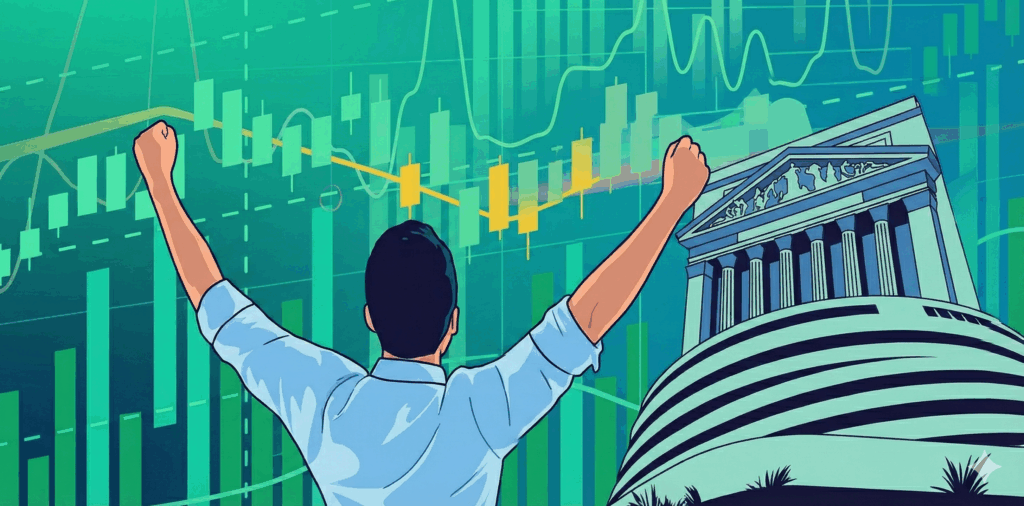The Dow Jones Industrial Average jumped 664 points on Tuesday, closing at 47,112, while the S&P 500 gained 0.91% to settle at 6,066 points, and the Nasdaq Composite climbed 0.67%, marking a third consecutive day of gains that caught many investors off guard after weeks of uncertainty about the Federal Reserve’s next move.
Markets now assign an 85% probability to a quarter-point rate cut in December according to the CME FedWatch Tool, a dramatic shift from just seven days earlier when odds sat below 50% and several major banks predicted the Fed would hold rates steady into early 2026.
What History Says About Rate Cuts Near Highs
The Fed cutting rates with the S&P 500 near all-time highs triggers predictable investor anxiety, but historical data from Carson Investment Research shows that in 20 instances since 1983 where the Fed cut rates within 2% of market peaks, the S&P 500 delivered positive returns 12 months later every single time. The average return was 14%, with gains recorded in 100% of cases one year after the initial cut, making these environments some of the strongest entry points for long-term investors rather than signals to reduce risk.
The pattern makes intuitive sense when examining Fed motivations. Rate cuts during expansions typically aim to normalize policy rather than respond to a crisis, meaning the Fed is removing restrictive conditions from an economy that remains fundamentally healthy rather than desperately trying to prevent recession. When the Fed cut during recessions, the S&P 500 averaged declines of 14% three months later and 12% a year later, but cuts to normalize during expansions saw the index up 13.2% on average a year later.
Current conditions align with the normalization scenario rather than panic cutting. The economy continues growing, corporate earnings remain strong, and inflation has cooled toward the Fed’s 2% target. The Fed raised rates over 5% points from near zero to 5.5% to combat inflation, and with that battle largely won, modest cuts simply remove excessive restriction rather than signal economic distress. Money market funds holding over $7 trillion, earning 5%-plus returns, will see those yields decline as the Fed cuts, historically pushing capital into equities as cash loses its yield advantage.
How Indian Investors Can Participate
For Indian investors, a potential U.S. rate-cut cycle offers a strategic opening. India’s markets provide structural long-term growth, but the U.S. offers exposure to global technology leaders, consumer giants, and companies that benefit most from early easing cycles.
Platforms like Appreciate allow Indians to invest in U.S. assets, including the S&P 500, Nasdaq 100, and individual stocks, through fractional investing beginning at ₹1. This makes global diversification accessible without large capital commitments. Additionally, historical INR depreciation during U.S. easing cycles has often amplified rupee-denominated returns from American equities, offering an added tailwind.
For risk-managed investors, U.S. ETFs tracking tech-heavy benchmarks provide exposure to companies that historically lead early-cycle rallies, while broader U.S. indices offer balanced access to the macro theme.
Conclusion
A three-day rally across the S&P 500, Nasdaq, and Dow, combined with falling Treasury yields and a sharp rise in rate-cut expectations, suggests markets are entering a critical macro phase. Historical precedent strongly favors positive equity returns when rate cuts occur near market highs, and today’s backdrop abundant cash, easing yields, and improving sentiment, mirrors those episodes closely.
For Indian investors, this moment represents less a short-term trade and more a globally significant pivot worth participating in. Positioned thoughtfully, U.S. exposure can complement India’s long-term growth with cycles of global policy-driven upside.
Disclaimer: Investments in securities markets are subject to market risks. Read all the related documents carefully before investing.























